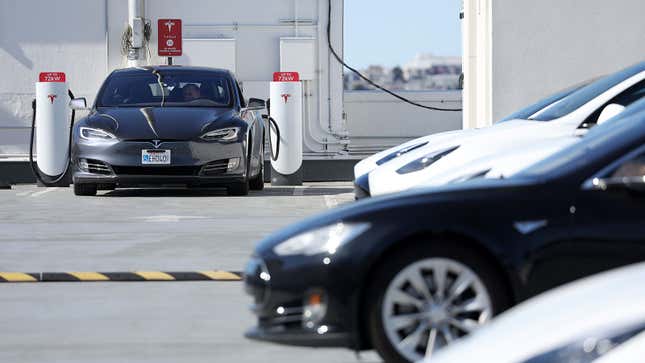Tax rebates for electric powered automobiles are a major deal below in The usa. Immediately after purchasing certain American-produced EVs, prospective buyers in the U.S. can declare up to $7,500 toward their car in an try to make battery-powered designs more accessible for more persons. But a new examine in California has discovered that these rebates aren’t essentially likely to the persons that might will need them the most.
In situation you skipped it:
In accordance to a report from The New Scientist, the review appeared into the distribution of funds that had been earmarked for green initiatives in California. It warned that the way this cash is dispersed across the condition would have an influence on the emissions in distinct locations. In basic terms, this suggests that 50 % of the state’s EV rebates are going to affluent regions, where by the air good quality is presently higher.
In truth, the crew discovered that just seven per cent of California’s EV rebates went to communities that the condition classed as “disadvantaged.” In contrast, communities ranked as “least disadvantaged” have been handed 46% of the rebates.
This most likely comes as no surprise to lots of, as even with a $7,500 tax split on an electrical car, most styles are wildly out of the value variety for any one in a reduced-income home. Confident, that tends to make the $28,000 Chevrolet Bolt EUV much more cost-effective, but it’s still a large amount of income for some individuals to invest on a automobile.

To gather the information required to back up this assumption, scientists from the University of California at Berkeley, the University of North Carolina at Chapel Hill, and the University of Miami collaborated to review the distribution of EV rebates issued across California. The workforce analyzed the spots of far more than 400,000 rebates issued by the state considering the fact that 2010.
Following plotting the destinations of people today that had claimed these tax breaks, the scientists then believed emissions of carbon dioxide, nitrogen oxide and sulfur dioxide, as nicely as particulate matter (PM2.5) that is emitted by tailpipes.
The investigate, which was released this 7 days in the PLOS Weather journal, found that emissions have been lowered considerably extra in the least deprived communities in the course of the interval examined. The state’s disadvantaged communities saw a significantly scaled-down reduction in emissions as a result of the pivot to EVs.
The New Scientist reviews that particulate emissions fell by nearly 1.5 lbs for each year throughout the analyzed period of time. This fall was 4 situations larger than in deprived communities studied. In those people parts, particulate emissions basically rose by 17 %.
What is additional, people increases weren’t impacted by alterations California designed to its EV rebates back in 2016. Seven many years back, the state took ways to limit the large cash flow people today who could claim the rebate and also improved refunds for low-money households from $2,000 up to $7,500.

Nonetheless, the examine located that these improvements only had a “marginal” impact on the distribution of incentives.
But there was a stark warning from the research thanks to a further influence of the switch to EVs. While the pivot to EVs helped lessen greenhouse gasoline emissions through the period, it didn’t hamper particulate issue emissions across the state.
In fact, the scientists uncovered that particulate matter in air samples taken throughout California basically amplified through the sample period. This, the examine implies, was possible thanks to the particles get rid of by tires and brakes on EVs, which are below a greater pressure due to the large battery packs.

